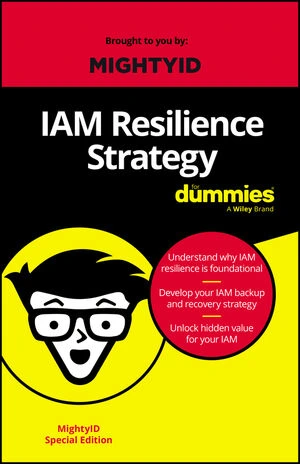Identity and Access Management (IAM) is a framework of policies, processes, and technologies that ensure the right people or systems have the right level of access to the necessary resources when they need them. Think of it as your digital keycard that grants you entry to your digital space and keeps out the wrong people.
How do you feel about IAM? Do you believe that’s just a problem that falls on IT? Do you even think your cloud systems need backups? No matter your impression, you aren’t alone. Many organizations feel a certain way about IAM, and in this article, you discover some of those thoughts — we call them myths — and how you can flip your way of thinking about these misconceptions.
That’s just an IT-only problem
Thinking IAM is just an IT issue is like assuming only IT cares about security. IAM affects every part of your business. Involve your leadership, HR, and other teams to stay secure and run smoothly.
Backups are all the same
All backups aren’t the same — especially with IAM. Many solutions exist, so make sure you do your homework. Recovery isn’t just about saving data; it’s about saving your system from a disaster with the right kind of backup.
Backups are maintained by your provider
Many folks assume backups are managed for them, but your IAM provider doesn’t automatically handle backups. Some providers may overlook important capabilities: being able to schedule backups proactively, validating integrity, and quickly recovering data to a secure, point-in-time state,
IAM is cloud resilient
Cloud providers don’t protect your unique IAM setup from errors or security issues. Prepare manual configurations in the event that a recovery is needed, or get a good IAM resilience solution.
Terraform can handle it
You use Terraform as your recovery strategy, and it versions, automates, and deploys your infrastructure, so you go by the old set-it-and-forget-it treatment without the worry, right? Well, that’s not always a good idea, and here’s why:
- Terraform’s static model doesn’t align with Okta’s constantly changing environment.
- Okta’s user roles and policies are too complex for Terraform’s linear setup.
- There aren’t incremental backups, encryption, or point-in-time recovery.
- Backups lack automation and integrity checks.
- Sensitive info in state files may be exposed due to lack of encryption.
We can’t switch our current IdP
Switching your Identity Provider (IdP) can feel like trying to move a mountain, but you can do it. Whether you’re migrating from one IdP or consolidating multiple systems, a great IAM resilience solution smooths the transition.
Our IAM data is stuck with our current IdP
With the right failover system in place, your IAM data is portable; you aren’t stuck. If your primary IdP goes down, a proper failover strategy temporarily moves your critical identities and associations to an alternate IdP.
We can use authoritative sources to rebuild identity data
We only need to focus on breach prevention
Breach prevention as the singular focus of an IAM security strategy is risky because no system is 100 percent breach-proof. A strong IAM strategy goes beyond just preventing breaches and ensures you can recover quickly.
Our business continuity plan will save us
Having a business continuity plan for IAM disasters isn’t always practical because IAM systems are complex, deeply integrated, and constantly changing. It takes a lot of time and can be hard to back up and restore configurations, policies, and access controls across multiple platforms. You may also not have the tools or expertise to test and maintain IAM recovery plans.







